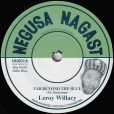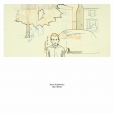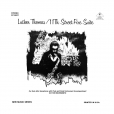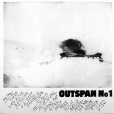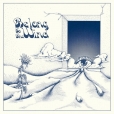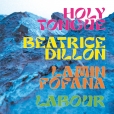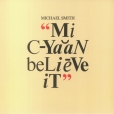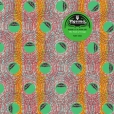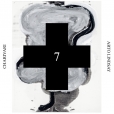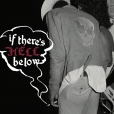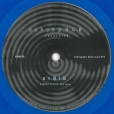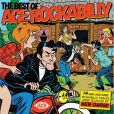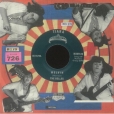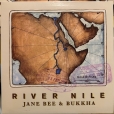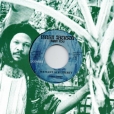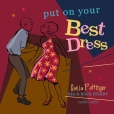Your basket is empty

A militant steppers — reminiscent of Johnny Clarke’s Blood Dunza — with magnificent trombone-playing by Vin Gordon. Shaka fire. Ace.
Both sides are knockout.
The Willacy is terrific roots, rough and mystical, compacted and bristling, with fine trumpet.
On the flip is Big Youth’s toast of Gregory’s Look Before You Leap.
With Joshua Abrams, Hamid Drake, Jonathan Doyle, and Josh Berman.
‘At the beginning of 2017, Chicago vibraphonist Jason Adasiewicz brought a quintet into the hallowed halls of Electrical Audio, Steve Albini’s legendary studio, to record the soundtrack for a new film, Roy’s World: Barry Gifford’s Chicago, a documentary by Rob Christopher based on the Roy’s World series of short stories by Barry Gifford.
‘It’s really an ensemble effort, the spotlight on the gorgeous compositions and spacious sensibility, a perfect complement to Christopher’s fascinating, beautiful film, which has a noir vibe set in a fifties version of the Windy City conjured by means of vintage found footage, narration by Willam Dafoe, Matt Dillon, and Lilli Taylor, and Adasiewicz’s score. Check the balafon-led groove of Blue People, nodding to Fela… and bluesy, swinging charts throughout, with elements that might recall the post-hard-bop Blue Note records of folks like Andrew Hill, Sam Rivers, and Grachan Moncur III, Roy’s World is more than a great soundtrack record, it’s a killer programme of new tunes played by a monstrously strong band recorded and mixed at one of the world’s finest studios.’
‘Alto saxophonist Luther Thomas was the loose cannon of the Black Artists Group milieu, with a raw freedom and keening, braying, gut-bucket blatancy funkily attuned to the no-wave crew. Besides recordings with Charles Bobo Shaw and Jef Gilson, he was a regular with James Chance and Defunkt, among others. (His collaborator here, the flutist Luther Petty was hot, too, for a brief moment in these years, playing with Lester Bowie’s Sho Nuff Orchestra.)
‘Recorded in 1978, soon after the pair moved from St Louis to NY, this is an emotional, volatile set of blues-drenched duets. The openness of mid-western AACM-style space-play, replete with little instruments, chasmically underpins evocations of the ferocity and unforgivingness of the Big Apple and its competitive loft scene.’
Paradigmatic yet forward-looking township jazz from 1975.
Braiding Wes Montgomery into marabi, the legendary guitarist leads a stellar line-up of musicians including Kippie Moeketsi, Barney Rachabane, Gilbert Matthews, Dennis Mpale, and Sipho Gumede.
The opener glances sideways at the commercial success of Abdullah Ibrahim’s recent Mannenberg — but the real magic follows on, when the players cut loose in their own, new directions.
This is the first vinyl reissue. Sleevenotes by Kwanele Sosibo feature interviews with key musicians, and previously unpublished photos.
Four dazzling, extended engagements with mbalax master-drumming.
The contribution from Holy Tongue is chase-the-devil steppers — thumping, clangorous, reverberating — super-charged with energy and atmosphere. From the off, drummer Valentina Magaletti detonates a hard rain of small bombs, rounds of fire, ticking fuses. Musical co-ordinates are somewhere between classic On-U Sound crew like African Head Charge, The Mothmen, and Creation Rebel, and the experimental funk of the Pop Group and 23 Skidoo, at their funkiest. Thrillingly, the two dubs are increasingly deranged.
Adjusting the same wavelengths as her superb Workaround LP, Beatrice Dillon plays spaced-out, abstract synth-work against the bodily physicality of the ancient, shifting mbalax rhythms. The music is poised, mindful, tentative; but also limber, fleet, and magical.
Phantasmagorical and efflorescent, Lamin Fofana’s one-two is simply stunning. Both excursions are wide-open, beautiful, epic, and propulsive — the first mix is banging and headlong, the second more syncopated and serpentine — teeming with freshly sublime, funkdafied updates on Jon Hassell’s Fourth World possible musics.
The two parts of LABOUR’s Etu Keur Gui engage the same sequence of drum patterns (called bakks) from different perspectives. The duo performed portions of this piece at the opening ceremony of the Dakar Biennial in 2022, at the Grand National Theater, with thirty sabar players from the family of Doudou Ndiaye Rose. This Wolof phrase for the inside-yard of a home — a meeting-place, an architectural breather — doubles here as a metaphor for inner space on a metaphysical level; and Pan Sonic, Muslimgauze, Zoviet France, early Shackleton… all ghost across the threshold.
A fabulous survey of early Congolese recordings, 1948-1963.
We can’t recommend it strongly enough.
‘Minimalism is usually cool, detached, frictionless and mathematical. The music made by percussionist Bex Burch is not any of these things. What she calls ‘messy minimalism’ shares some characteristics with the music of Steve Reich and John Adams, but this is minimalism that isn’t afraid to break into a sweat and get its hands dirty (quite literally, given that Burch actually builds her own instruments from scratch). She mainly plays a gyil, a marimba-like tuned percussion instrument she learned while studying music in Ghana.
‘Burch’s first solo album lands her in Chicago, enlisting trumpeter Ben LaMar Gay and members of Tortoise. Sometimes, the results sound like an earthier Philip Glass: Dawn Blessings pairs her dreamlike, two-note gyil pattern with violinist Macie Stewart’s beautiful harmonies; Don’t Go Back to Sleep sees Burch’s gyil fractionally out of phase with a synthesiser, then spins into hypnotic but disorientating minimal techno.
‘Other tracks get wilder. There are drum circles, water drums and birdsong; tracks that exploit the acoustics of a California canyon. Pardieu turns a three-note xylophone riff into a compelling funk groove; Fruit Smoothie With Peanut Butter is a wonderfully chaotic drum circle that sounds melodic despite not featuring any tuned instruments. Best of all is You Thought You Were Free?, which layers clattering percussion over the wailing siren of a tornado warning relayed over Chicago until it sounds like a freakish fusion of the Master Musicians of Joujouka and Fela Kuti’ (The Guardian).
‘This thirteen-track compilation exhumes forgotten brilliance from the Afroamerican underground of the 1970s. Awash in fuzzed-out guitars, wah-wah pedals, lysergic-soaked grooves, and enough inflation depression to fill the tank of a shag wagon, If There’s Hell Below imagines a world where Hendrix lived on and Funkadelic never crawled out of the garage.’
Transparent red vinyl.
Lovely, mystical, incantatory, roots singing over a deep, knock-off-Rhythm-&-Sound rhythm.
Magnificent, super-soulful sufferers for the ages; full of yearning and hurt, and staying power.
Adrian Sherwood marshals Bruce Smith, Keith Levene, Ari Up, and Crucial Tony; and George Oban, Eskimo Fox, and Style Scott, from African Head Charge.

